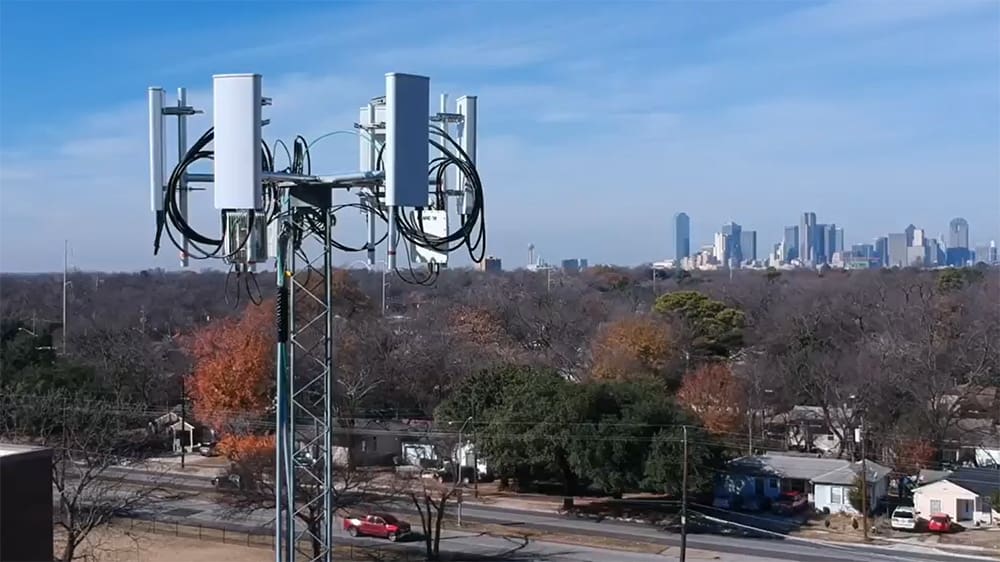
The trifecta of shared spectrum, small cells and emerging technologies such as eSIM and edge computing has made neutral host mobile networks a reality. Enterprises and dedicated solution providers see a market ripe for change, and one in which wireless service can be actively shared across third parties on a wholesale open-access basis.
What is a Neutral Host?
A neutral host, in the context of telecommunications, is a third-party provider of shared mobile or wireless infrastructure that multiple mobile network operators (MNOs) can use simultaneously to deliver mobile coverage.
On-demand and cost-effective access to shared wireless infrastructure, all the way from the core to radios, presents an array of opportunities that are not technically or economically viable with existing public fixed or mobile networks.
Temporary solutions for events and concert venues, as well as permanent deployments for locations including theme parks and dense urban environments, represent some of the leading neutral host use cases.
For third parties like local authorities and municipalities, there is real benefit to be found in neutral hosting beyond the resolution of the digital divide. A radical reduction in visual pollution, for example, may be achieved through active sharing of equipment. Plus, this can simplify and speed deployment in terms of zoning laws and enable greater site grid densification.
How does a neutral host network work?
Neutral host deployment models are based on the provision of localised, commercial and wholesale wireless solutions to entities, including mobile operators and other CSPs and enterprises.
A third-party neutral host provider is tasked with operating and maintaining the infrastructure, which is usually based on small cells and an on-site core network. Access to the shared network may be paid or unpaid, and it can be based on dedicated spectrum owned by the neutral host provider itself, shared spectrum like CBRS, or the mobile operator’s own frequencies.
The backdrop of rapid data traffic growth and the need for intensive site grid densification amid a continued period of stagnant mobile revenues has soured the traditional approach of operators independently deploying and operating their own network infrastructure.
Indeed, this trend is particularly evident across markets in Europe, where industry titans such as Vodafone Group and CK Hutchinson’s Three have been spinning off their tower portfolios in an effort to monetise infrastructure and raise much-needed cash.
Infrastructure providers like Cellnex have been able to capitalise on this flurry of sell-off activity, and are now in a prime position to leverage these assets for potential future uses including neutral hosting.
The progressive ceding of control over both the active but, especially, passive components of mobile networks away from operators lends itself to a more frictionless adoption of neutral host models in the coming years.
Challenges posed by Neutral Host Networks
Despite the hype, any such adoption of neutral hosting will not be totally seamless, and there are still a number of stumbling blocks that need to be overcome. Security, for example, is an important consideration and flexible authentication methods that can support a multitude of different device types, client confidentiality and encryption are required.
Responsibilities that were once assumed by mobile operators alone will shift and need to be shared with the neutral host provider. These include SIM provisioning and profile management, as well as the testing and certification of network equipment for optimal integration, performance and security.
Other challenges such as interconnectivity and roaming also need to be addressed, ensuring that users experience seamless service and contiguous coverage across both the public mobile network and in locations served by the neutral host provider.
Automatic network selection without user intervention will be key to facilitating mobility, and service-level agreements (SLAs) will have to be defined to provide for this interoperability.
For billing, new and agile systems will be required to underpin the process of charging mobile operators for access to the neutral host’s infrastructure. Complex rules that take account of the network resources used can be orchestrated with advanced levels of automation.
The most obvious challenge to consider, however, is also perhaps the most important one: governance. From the outset, a clear structure of who will actually design, deploy, own and operate the asset needs to be defined, in addition to early alignment of business objectives across each stakeholder and role definitions.
What are the Benefits of Neutral Hosts?
- Reduced infrastructure costs
- Faster mobile coverage deployment
- Enhanced indoor connectivity
- Future-proofing for 5G
Why the Neutral Host Model Is Gaining Momentum
- Market growth stats
- Regulatory and cost pressures
- Enterprise demand for indoor coverage
Neutral Host in Action Today: From Urban Densification to Private Wireless Networks
As the neutral host model continues to gain ground, a popular configuration for deployment is that of telecom streetworks. An unobtrusive telecom streetworks solution can be used for macro or micro networks — either with a new pole or retrofitting an existing deployment with a modular antenna and optional radio shroud. This type of neutral host deployment greatly enhances aesthetics, streamlining approvals for faster 5G densification and helping to speed time-to-market.
Likewise, in addition to traditional pole-mounted deployments, telecom streetworks can be integrated in other types of infrastructure. For example, neutral host deployments merged with waste and recycling bins provide additional 5G capacity in dense urban areas while minimizing footprint and unsightly clutter in the public right of way.
The Neutral Host Model is Sprouting Wings
As mobile operators clamor to densify their networks in urban environments, barriers are rife: excessive visual pollution, high capital intensity and unprecedented network complexity. Neutral host deployment models provide cost-effective solutions to these challenges and many more through facilitating shared access to a singular infrastructure and service proposition.
